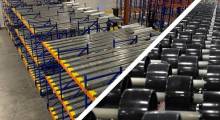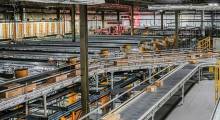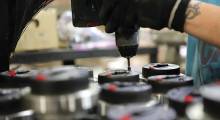Traceability and sustainability are two of the hottest hot buttons in supply chain today. And while both are typically looked at as big picture themes, their implementation and success are all about the smallest of details, especially in packaging. Let me explain.
Ideally, you want to permanently mark an individual item without consuming a consumable. That’s the purest form of traceability and sustainability. Sounds easy, but the packaging world isn’t entirely built that way quite yet.
Bar coded labels are not only two consumables (label stock and ink), but can be removed from packaging if someone’s got some time and a reason to do it. Oh, yes, there’s also the matter of common label abrasion during shipment. So, you’ve kind of got two strikes against optimum traceability and sustainability. (That said, who’s going to turn their back on a good bar code label? Not many people in 2021.)
Ink jet coding data directly on an item ranging from a carton to a bottle of water changes the consumable equation somewhat. The label may be gone, but the ink is still a consumable, and it, too, can be removed (a simple alcohol wipe does the job) or abraded from the substrate.
Which leads us to laser marking, explains David Holliday, director of product marketing at ID Technology, a ProMach product brand.
Now, most people aren’t all that familiar with laser marking. Or so you think. That bottle of water or can of soda sitting on your desk may well have been laser marked instead of ink jet marked. Holliday says there’s an easy way to figure out which marking technology was used. Just rub your finger over it. If it feels like it’s engraved then it’s laser etched.
That prompts Holliday to explain that the technology has already been adapted to cartons as well as individual parts from plumbing fixtures to auto and aerospace components.
But first, let’s address the elephant in the room: the consumables in laser marking. No inks. No labels. In fact, even the carbon dioxide consumable originally needed for laser coding is now history. Holliday says the carbon dioxide lasers used today are completely sealed and have a life of at least five to seven years. That’s about as small a consumable footprint as you can get. Not bad.
Better yet, laser markings are entirely permanent. They are engraved in the surface of the item. And that is a huge bonus for laser marking, especially for automotive and aerospace parts. Holliday says DataMatrix bar codes are commonly laser engraved into those parts ensuring permanent identifiers on parts in industries with increasingly stringent traceability requirements.
Then there’s the matter of the common carton. This is in earlier stages of development. While it’s easy to laser mark the carton, it isn’t very readable unless it appears in a high-contrast box or field. Holliday says a company called DataLase is pioneering efforts to apply variable shipping information in white or other higher contrast fields on corrugated boxes.
While the trajectory of laser is not as clear as the markings it makes, the technology is certainly making advances. And demands for increased traceability and sustainability are sure to give laser marking a boost going forward.
Article topics








